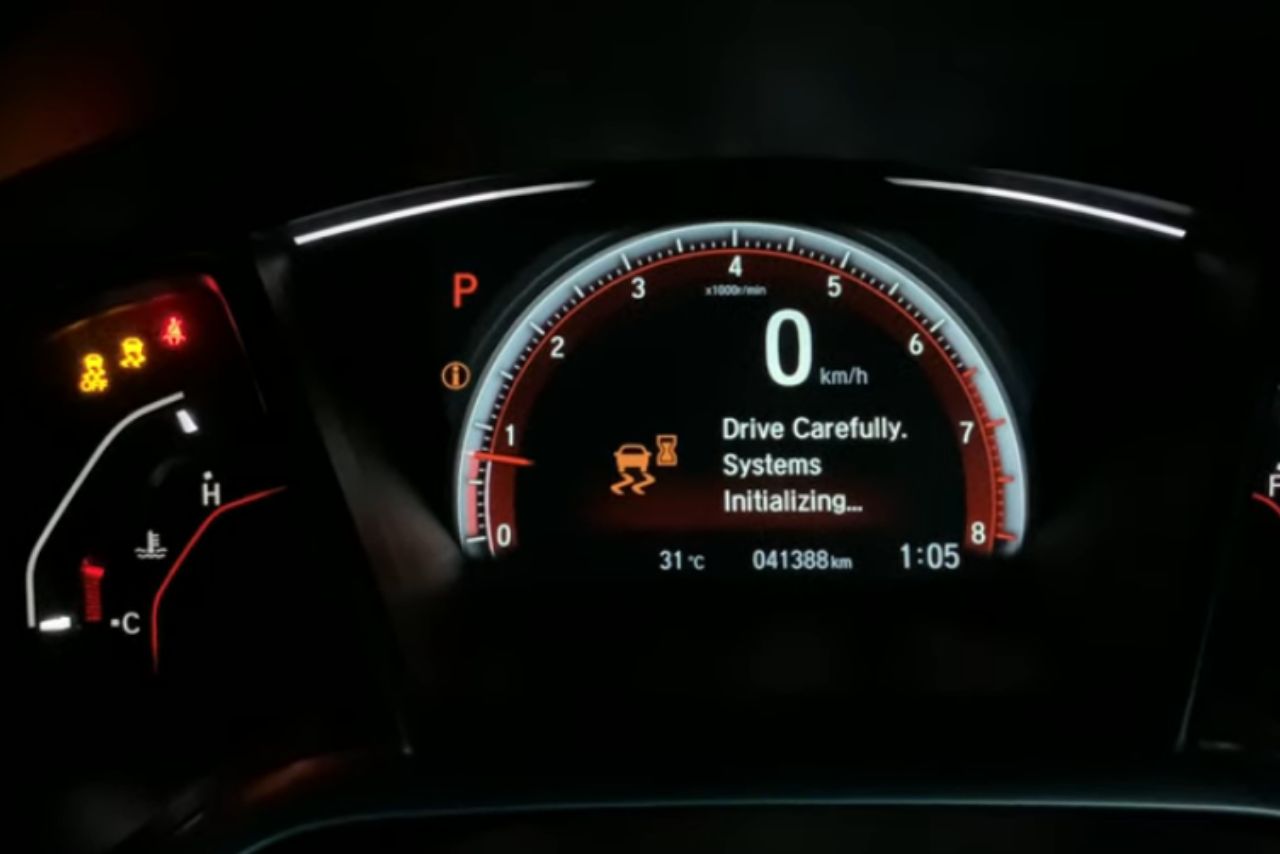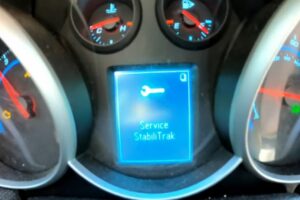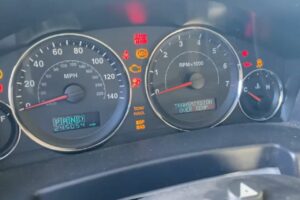Welcome to the ultimate guide for a quick fix of the “Drive Carefully Systems Initializing” message on your Honda Civic. If you’ve been scratching your head wondering how to deal with this specific issue, worry no more!
In simple terms, this is usually an indication that one or more systems in your car are initializing or resetting and driving carefully is advised during this time.
Let’s get started on understanding what it means and how you can quickly fix it without breaking a sweat.
Table of Contents
Drive Carefully Systems Initializing Honda Civic Causes & Fixes:
1. Checking the Ignition System:
The ignition system is crucial in starting your Honda Civic. Here are some quick steps to ensure it’s working properly:
Inspect the Ignition Switch:
Examine Spark Plugs and Wires:
- Look for any signs of wear or damage.
- Make sure all connections are secure.
- Test the Ignition Coil: Use a multimeter to measure resistance levels, as outlined below:
| Coil Type | Primary Resistance | Secondary Resistance |
|---|---|---|
| Type A | 0.75 – 0.81 ohms | 10,000 –14,000 ohms |
| Type B | Same as Type A | Same as Type A |
- Check Distributor Cap and Rotor: Both should be free of cracks or corrosion.
Remember, if you’re not confident with these checks or encounter complex issues, always seek professional help from a certified mechanic!
2. Inspecting the Fuel System:
The fuel system in your Honda Civic plays a crucial role. It ensures smooth engine performance and fuel efficiency. If you notice any issues with your ‘Drive Carefully Systems Initializing’ warning, it’s time to inspect this system.
Here are steps to follow:
Check the Fuel Cap:
- A loose or damaged fuel cap can trigger warnings.
- Ensure it is not cracked.
- Verify it fits snugly and securely.
Inspect the Fuel Filter:
- Look for blockages.
- Replace if dirty or clogged.
Examine the Fuel Injectors:
- Check for leaks or blockages.
- Clean them regularly for optimal performance.
Do a quick comparison of a healthy versus problematic fuel system by referring to this table:
| Healthy Fuel System | Problematic Fuel System |
|---|---|
| Smooth acceleration | Hesitation during acceleration |
| Consistent idle | Rough or inconsistent idle |
| Good mileage | Decreased miles per gallon |
Remember, regular maintenance keeps those unwanted warnings at bay!
3. Examining the Electrical System:

When your Honda Civic displays “Drive Carefully Systems Initializing”, it’s often due to issues within the electrical system. Here are some steps to examine it:
Check Battery Connections:

- A loose battery connection can cause intermittent power supply, triggering this warning message.
- Inspect if battery terminals are clean and tightly secured.
- If they appear corroded or loose, disconnect them (starting with negative), clean using a solution of baking soda and water, then reconnect securely (positive first).

Analyze The Fuse Box:
- A blown fuse may also lead to this problem.
Inspect Wiring Harnesses:
- Look for visible signs of wear and tear in wiring harnesses leading towards ignition switch or ECU (Engine Control Unit).
- If there’s damage, consider professional repair or replacement.
Scan for Trouble Codes
Use an OBD-II scanner to detect possible trouble codes which might explain the issue being faced by your vehicle’s electrical system.
Remember: Always disconnect battery before performing any repairs on your car’s electrical system!
4. Diagnosing Sensor Issues:
If your Honda Civic is displaying the “Drive Carefully Systems Initializing” message persistently, it could be a sensor issue. Follow these steps to diagnose and resolve:
Check OBD-II Codes:
- Use an On-board Diagnostic (OBD) scanner to pull any trouble codes from your vehicle’s computer.
- P0325: Knock Sensor
- P0130: Oxygen Sensor
- P0455: Evaporative Emission Control System Leak Detected
Evaluate Sensors Individually:
| Sensor | Symptoms of Failure |
|---|---|
| Knock Sensor | Engine pinging or knocking noises, reduced engine performance |
| Oxygen Sensor | Poor fuel economy, black smoke from exhaust, check engine light on |
| Evap System | Gas smell, difficulty starting after refueling |
- Inspect Wiring and Connections: Check for loose connections, corroded terminals or damaged wires.
- Replace Faulty Sensors: If faulty sensors are identified during diagnosis, replace them promptly to prevent further issues.
Remember that regular maintenance can help avoid such problems in future.
5. Troubleshooting Engine Problems:
When your Honda Civic displays ‘Drive Carefully Systems Initializing’, it may indicate an engine problem. Here’s a quick fix guide:
Remember, this guide helps identify issues but always consult with a professional mechanic if unsure about performing these checks yourself!
6. Testing the Cooling System:
To ensure your Honda Civic remains in optimal condition, regular testing of the cooling system is vital. Follow these simple steps:
- Open the hood
- Locate the coolant reservoir
- Check that fluid level falls between “MIN” and “MAX”
- Inspect radiator hoses:
- Look for any signs of bulging or cracking.
- Ensure clamps are tight and secure.
- Observe possible leakage spots:
Scan around:
- The water pump
- Radiator ends
- Coolant reservoir
- Consider a professional pressure test: If you notice issues with your vehicle’s temperature gauge or see visible leaks, it may be time to consult a mechanic for a pressure test.
Here’s a quick reference table:
| Steps | Action |
|---|---|
| Step 1 | Check Coolant Level |
| Step 2 | Inspect Radiator Hoses |
| Step 3 | Observe Possible Leakage Spots |
| Step 4 | Professional Pressure Test |
Remember, maintaining your cooling system can help avoid costly repairs down the road!
7. Addressing Transmission Concerns:
Honda Civic is known for its reliability, but like any other vehicle, it can develop transmission issues. Before you rush to a mechanic, some quick fixes may help:
Regular Fluid Checks:
Check the transmission fluid regularly. A low level of fluid could lead to problems.
Use a dipstick to check the level.
The color should be bright red. If it’s dark or has a burnt smell, replace it.
Shift Linkage Adjustment:
If your Civic isn’t shifting properly, adjusting the shift linkage might resolve the issue
Locate the shift linkage on your vehicle’s underside.
Adjust until you find satisfactory gear changing.
Software Updates:
Sometimes, software updates from Honda can fix transmission issues.
- Go to Honda’s official site and enter your car model detail.
- Download any available update and install it using instructions provided.
Here are some signs that indicate potential transmission concerns:
| Signs | Implications |
|---|---|
| Difficulty in Shifting Gears | Possible shift linkage problem |
| Slipping Gears | Low Transmission Fluid Level |
| Unusual Noise when in Neutral | Serious internal problems |
Remember these are just immediate actions you can take at home before reaching out to professionals for help if needed!
8. Dealing with Brake Malfunctions:
Brake malfunctions in your Honda Civic can be a serious issue, but don’t worry. Here’s a quick step-by-step guide to help you out:
- Assess the Situation: Determine if it’s an emergency or not.
- Check Your Brake Fluid Levels: Look for the brake fluid reservoir on the driver’s side of your car.
Here are some common signs of brake issues and their potential causes:
| Signs of Trouble | Possible Cause |
|---|---|
| Squeaking/Squeal | Worn-out Brake pads |
| Mushy/Soft Brake Pedal | Air in the braking system |
If you’re dealing with severe issues such as total brake failure, here’s what to do:
- Try Using The Emergency (Hand) Brakes: Apply slowly avoiding sudden movements.
- Downshift Into a Lower Gear: This will slow down your vehicle naturally.
Remember, safety should always be your top priority! Consult with a professional mechanic if needed.
9. Resolving Steering and Suspension Issues:
Honda Civic is known for its top-notch steering and suspension system. However, any issues can seriously affect your driving experience. Here are some quick fixes:
To better diagnose the issue:
| Problem | Possible Cause |
|---|---|
| Hard Steering | Low Power Steering Fluid |
| Irregular Tire Wear | Damaged Control Arm/Bushing |
Here’s how you handle these problems step-by-step:
- Pop open the hood of your Honda Civic.
- Locate the power steering reservoir; check fluid levels.
- If low, refill with recommended power steering fluid.
- For control arm/bushing inspection, safely raise vehicle using jack stands.
- Inspect visually for any damages or excessive wear.
Remember, always consult with a professional if you’re unsure about performing these tasks yourself!
Here’s an video guide to fix it:
Conclusion and final thoughts 💭
In the end, we can safely say that troubleshooting your Honda Civic’s Drive Carefully System is not as daunting as it may seem. All you need is a bit of patience and to follow the steps outlined in this guide.
Remember, proper maintenance and regular check-ups are key to ensuring your car operates at its best.
Don’t sweat if problems arise; they’re part of owning a vehicle. With our quick fix guide, you’ll be back on the road in no time! So strap up, start your engines, and enjoy the smooth ride your Honda Civic brings.
Latest Posts:
- Can WD-40 Remove Scratches on Cars? (Hint: Yes, but…)
- Can You Use a Drill to Polish Your Car? (We Tried it Out!)
- Should You Cover Car Scratches With Stickers? (REVEALED!)
- Buick Service Stabilitrak: (Causes & 100% Guaranteed Fix!)
- Common Holden Trax Problems (Causes & 100% Proven Fixes!)
- Jeep Commander Transmission Over Temp: (Guaranteed Fix!)











Leave a Reply